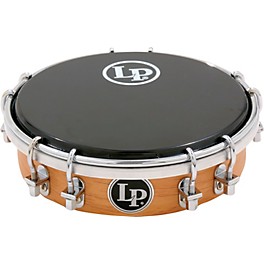Tamborims
Best Match
6 matches found
- Previous
- 1
- Next
If you're into these genres, then you probably already know the tamborim well. Otherwise, consider it a great way to branch out into a new and exciting type of drumming. The average tamborim is based on a wooden, metal or plastic shell about six inches across. A nylon head stretches over the top with plenty of tension, delivering sound that's punchy, high and energetic, with brief taps and not a whole lot of sustain. You won't find any hardware like jingles or snares on one of these drums: they're all about tight, controlled sounds.
There are two types of beaters commonly used to play the tamborim. One is a simple, small drum stick and the other is a tight bunching of separate rods, sort of like a super brush. Some adventurous percussionists might also play the tamborim by hand. The tamborim is a very expressive drum, and when you have the hang of it, you'll definitely put a little bit of your personality into every performance. Typical tamborim technique relies on a primary groove known at the "carreteiro," which you'll accentuate by developing your own signature segments to add into the mix. Since the tamborim's sound is so sharp and penetrating, it's easy for you to make yourself heard even when you're playing as part of a boisterous samba ensemble. It's not especially tough to learn the basics of the tamborim, but mastering it is another matter. Discovering the ins and outs of tamborim technique will definitely help you along the challenging path to becoming a pro with this one-of-a-kind Brazilian percussion instrument.


